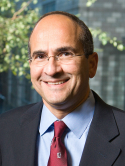Treatment of hydroxyapatite scaffolds with fibronectin and fetal calf serum increases osteoblast adhesion and proliferation in vitro Journal Article
| Authors: | Schonmeyr, B. H.; Wong, A. K.; Li, S.; Gewalli, F.; Cordeiro, P. G.; Mehrara, B. J. |
| Article Title: | Treatment of hydroxyapatite scaffolds with fibronectin and fetal calf serum increases osteoblast adhesion and proliferation in vitro |
| Abstract: | BACKGROUND: The use of hydroxyapatite in reconstructive surgery has been hampered by the fact that it is very slowly invaded by host tissues, a process that is critical to graft incorporation. Implant compatibility may be augmented by providing cellular binding sites and by seeding cells before implantation. METHODS: Bone-forming cells were seeded onto hydroxyapatite disks, and precoated with fibronectin and fetal calf serum or phosphate-buffered saline. Cellular adhesion and proliferation was analyzed in vitro. For in vivo studies, experimental and control hydroxyapatite disks were seeded with green fluorescent protein-expressing cells and implanted into mice. RESULTS: Fibronectin/fetal calf serum pretreatment improved cell attachment and cell growth significantly in vitro. After 48 hours, experimental disks (n = 5) contained 2.8 times more attached cells than controls (p < 0.001), and after 7 days this difference had increased further (4.2 times) (p < 0.001). In the in vivo part of the study, sections from implants (n = 4) harvested 3 days after implantation demonstrated an average of 122 ± 50 green fluorescent protein-labeled cells/mm in the fibronectin/fetal calf serum group compared with 85 ± 21 cells/mm in the phosphate-buffered saline controls. After 10 days, the cells had in general decreased in number in both groups, but the relation in cell density was similar to the first time point (19 ± 11 versus 12 ± 11 cells/mm). CONCLUSION: In vitro attachment and proliferation of bone-forming cells on hydroxyapatite is significantly increased by pretreatment with fibronectin/fetal calf serum, but this difference is less profound and not significant in vivo. ©2008American Society of Plastic Surgeons. |
| Keywords: | controlled study; nonhuman; methodology; cell proliferation; blood proteins; animal cell; mouse; animal; animals; mice; cells, cultured; green fluorescent protein; animal experiment; tissue regeneration; in vivo study; in vitro study; drug effect; scleroprotein; cell culture; rat; rats; cell adhesion; hydroxyapatite; biocompatible materials; durapatite; tissue engineering; guided tissue regeneration; osteoblast; osteoblasts; plasma protein; implantation; bone regeneration; rats, inbred f344; fibronectin; biomaterial; fetal calf serum; extracellular matrix proteins; phosphate buffered saline; fischer 344 rat; tissue scaffold; fibronectins; tissue scaffolds |
| Journal Title: | Plastic and Reconstructive Surgery |
| Volume: | 121 |
| Issue: | 3 |
| ISSN: | 0032-1052 |
| Publisher: | Lippincott Williams & Wilkins |
| Date Published: | 2008-03-01 |
| Start Page: | 751 |
| End Page: | 762 |
| Language: | English |
| DOI: | 10.1097/01.prs.0000299312.02227.81 |
| PUBMED: | 18317125 |
| PROVIDER: | scopus |
| DOI/URL: | |
| Notes: | --- - "Cited By (since 1996): 7" - "Export Date: 17 November 2011" - "CODEN: PRSUA" - "Source: Scopus" |
Altmetric
Citation Impact
BMJ Impact Analytics
Related MSK Work





